Common drone fly
Eristalis tenax
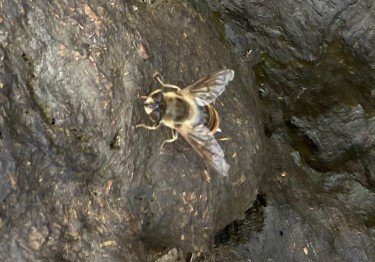
Despite its resemblance to a bee, the hoverfly is a harmless fly.
The adults feed on pollen and nectar, and are very abundant during the summer. Adults are excellent pollinators. Their larvae can proliferate in wet areas in breeding situations.
Rat-tailed maggots
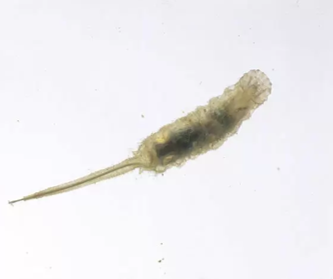
Life cycle
To reproduce, females seek moist environments containing organic matter. For these reasons manure pits are very attractive to rat-tailed maggots. The eggs are laid in the pits and the larvae develop there. Once mature, just before pupation, the larvae migrate to drier areas to pupate. It is often during this stage that the breeder can be confronted with this species. Hundreds of larvae can crawl on the ground. The adult flies that emerge from the pupae will leave the barn in search of flowers outside.
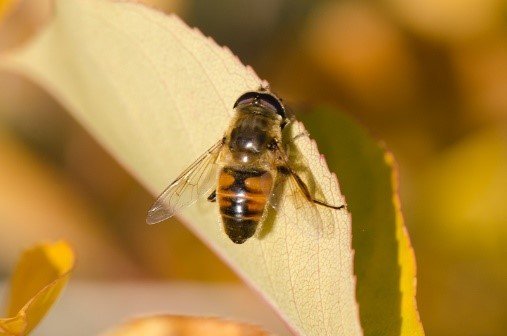
Identification
The eggs are ovoid white. The larvae molt several times before reaching maturity. They are characterized by the presence of their tail which is in fact a snorkel. To get enough oxygen, the larvae have an expandable breathing tube that can be several times their body length.
Adult flies measure 14–16 mm and have two distinctive vertical bands of hair over their eyes.
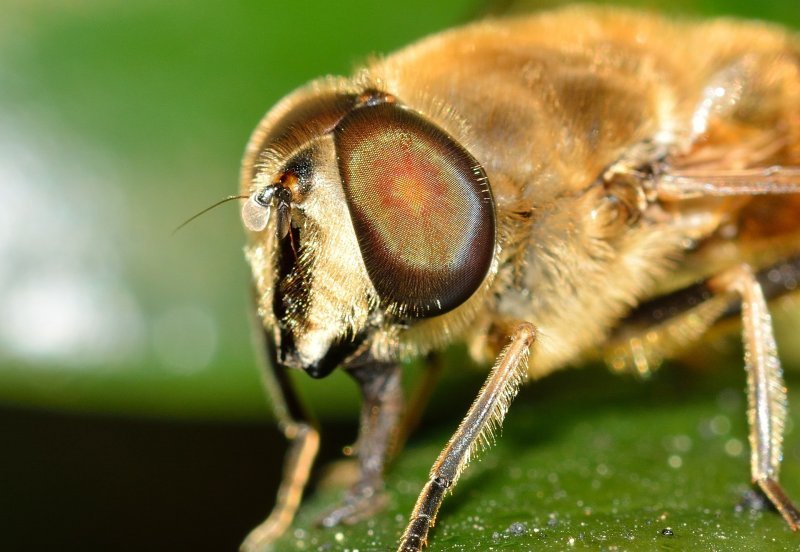
Natural habitat and behavior
The larvae feed on decomposing organic matter, which is why they live in manure, where they filter their food. Adults feed on the nectar of flowers, they are pollinators.
Nuisances
Flies and larvae are harmless for animals, but the sight of large numbers of crawling larvae can be unpleasant. They can be abundant in pits, milking areas or in the breeder's store.
Chemical treatments in the slurry are not recommended. Often there is only one generation in early summer. During this period, it may be useful to empty the slurry pit.
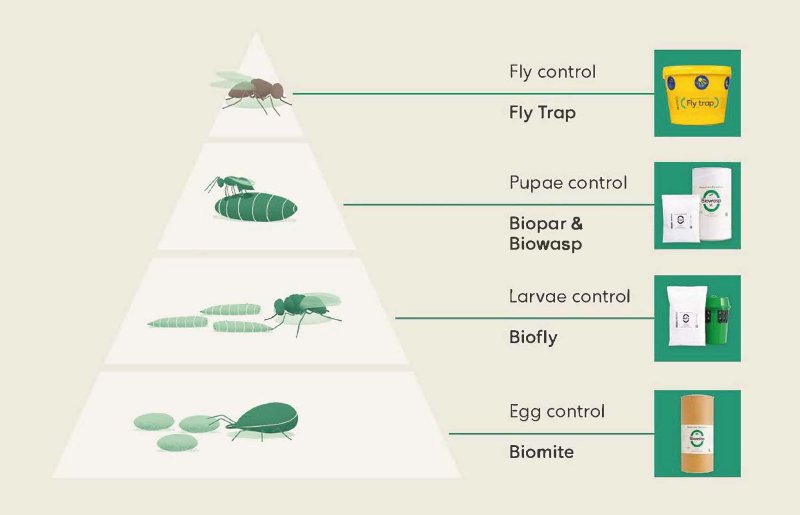
Get in touch
A successful approach to biological fly control is based on strategically planned releases.
Please contact us to discuss the possibilities.

